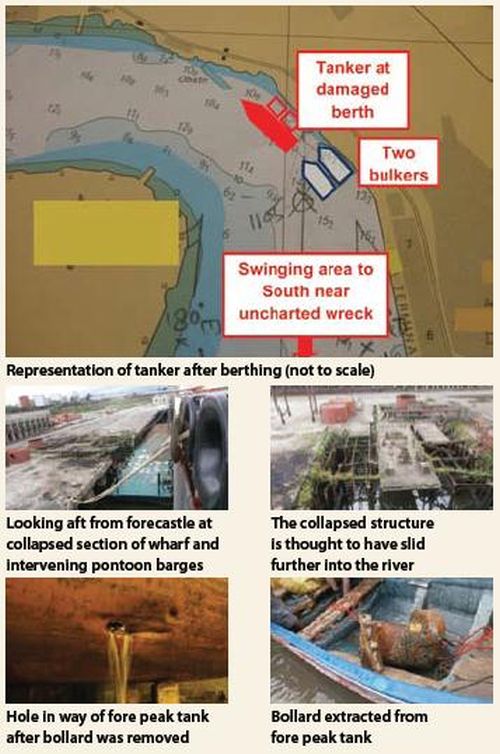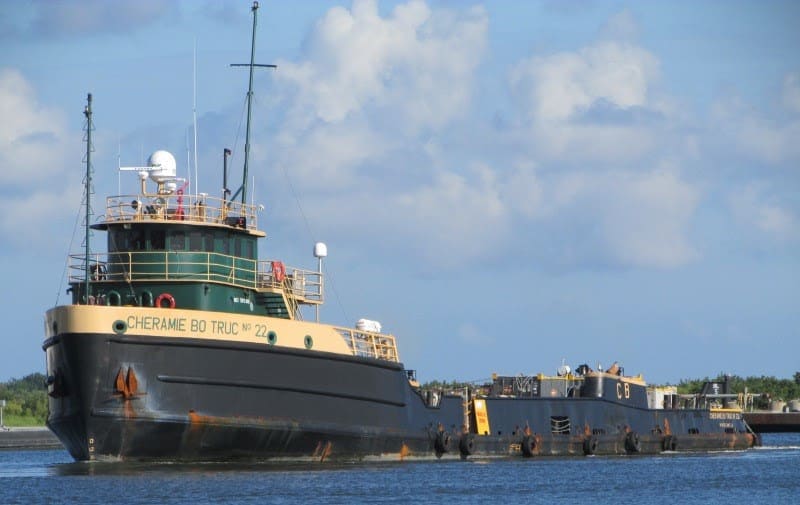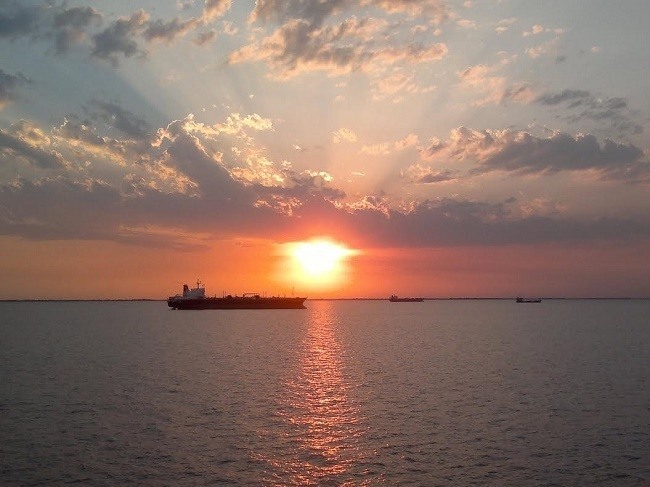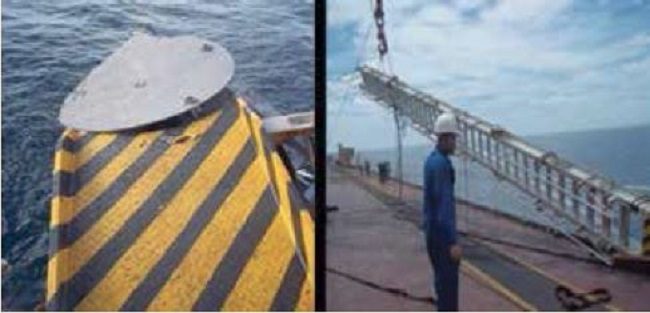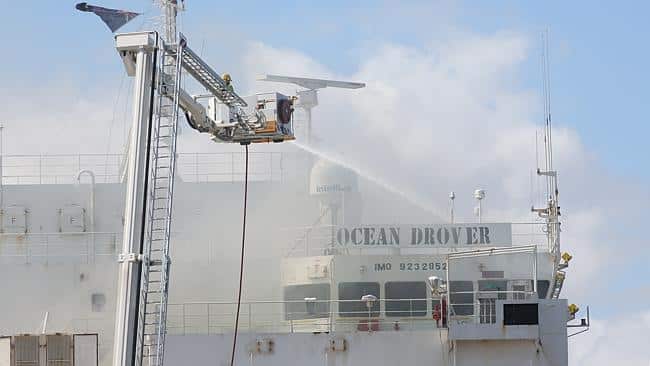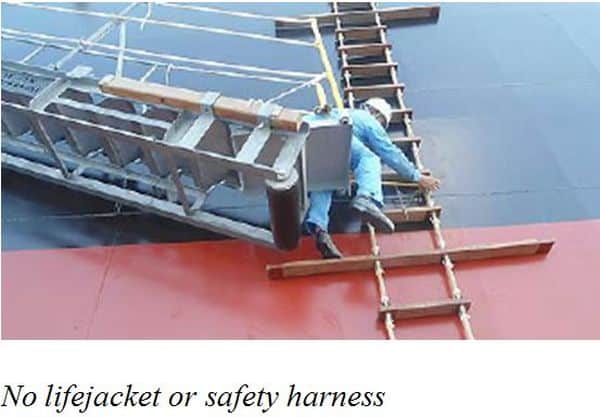Real Life Incident: Shifting Anchorage Position Ends In Disaster
A loaded bulk carrier arrived at an anchorage off a busy port. Once at anchor, the plan was to use the ship’s cranes to discharge the cargo of scrap steel into self-propelled lightering barges made fast alongside both sides.

After the cargo lightering operation had begun, the vessel was observed to be dragging anchor in a southerly direction. There was a low under keel clearance and strong currents, so the main engine was used to slow the movement of the vessel. Despite this, the cargo discharge operation to the barges continued apace.
Discharging operations had been ongoing for about three days when the local Port Control called the vessel and instructed them to reposition their anchorage position because they had by now dragged too close to the pilot boarding area. The plan was to lift anchor and move back to the initial anchorage spot. The Master decided to continue cargo discharge into the three barges moored on both sides of the vessel while making the move under slow engine.
As the vessel was about to drop anchor at the planned position, Port Control advised the vessel not to re-anchor there, but to go to a position further out. As they made way towards the new position, the combination of strong tidal current astern (approx. 1.5kts), the slow speed of the bulk carrier and the added drag of the barges on both sides made manoeuvring more sluggish.
It became apparent that course made good was bringing the bulk carrier into a collision situation with an anchored vessel. In a desperate attempt to avoid contact with the anchored vessel the engine was increased to half ahead and then full ahead and hard port helm ordered. The bulk carrier nonetheless made contact on its starboard side with the other anchored vessel. The lightering barge that was moored on that side sustained major damage and foundered within five minutes. Some of its crew jumped into the water and were recovered. Unfortunately two crew were trapped within the sinking barge and were later declared deceased.
Lessons learned
Good seamanship would normally see the lightering operations halted and the barges released prior to weighing anchor and re-positioning the vessel. This would have increased manoeuvrability, possibly allowing the move to be accomplished without incident. No fatalities would have been sustained even had the collision nonetheless occurred.
Low under keel clearance will cause increased drag forces on a vessel and can initiate dragging anchor when all other factors seem benign.
Reference: The Nautical Institute
Do you have info to share with us ? Suggest a correction
About Author
Marine Insight News Network is a premier source for up-to-date, comprehensive, and insightful coverage of the maritime industry. Dedicated to offering the latest news, trends, and analyses in shipping, marine technology, regulations, and global maritime affairs, Marine Insight News Network prides itself on delivering accurate, engaging, and relevant information.

About Author
Marine Insight News Network is a premier source for up-to-date, comprehensive, and insightful coverage of the maritime industry. Dedicated to offering the latest news, trends, and analyses in shipping, marine technology, regulations, and global maritime affairs, Marine Insight News Network prides itself on delivering accurate, engaging, and relevant information.
- Real Life Incident: Vessel Collision in Good Visibility
- Real Life Incident: Severe Injury To Deck Crew While Leaving Berth
- Real Life Incident: Departure Damage in Very Restricted Waterway
- Real Life Incident: Low Situational Awareness Has High Impact Consequence
- Real Life Incident: Fouled Anchor in a Designated Anchorage
- Real Life Incident: Fire On Barge Carrying Scrap Metal Causes $7 Million Worth Of Damage
Latest Case studies Articles You Would Like:
Subscribe To Our Newsletters
By subscribing, you agree to our Privacy Policy and may receive occasional deal communications; you can unsubscribe anytime.










